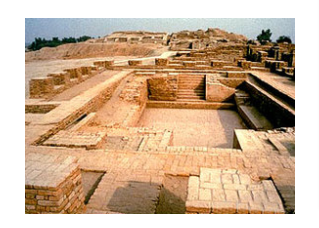Irrigation Methods in the Indus Valley Civilization
Irrigation Methods:
- Indus Valley Civilization protected their crops with slings and clays of balls. They also built walls to protect them from floods. They used irrigation canals to bring water from the river to their crops
- Many scholars now believe that climate change is responsible for the decline of the Indus Valley Civilization
- Water supply might have been reduced because the monsoon shifted towards the east. This might have resulted in the forceful migration of the Harappan from the Indus River Valley and residing in smaller villages and isolated farms
The Division of Labor
- The civilizations that developed around rivers like Yellow River, Indus River, Euphrates River, Tigris River, and Nile River created opportunities for agricultural revolution and helped them become settled communities
Ancient Irrigation System:
Silt-Bearing Floods:
- The Silt-Bearing Floods make grounds fertile as the river brings silt with it during floods and helps in agriculture
- The silt adds the essential nutrients required for the crops that help them grow, and hence it keeps the soil fertile
Irrigation Canals:
- An organization of immersion canals lined up with natural drainage canals
- In the monsoon season, they flow as canals for approximately 4 to 5 months. Later they work as drainage canals
Did not cause waterlogging:
- Luckily, it did not cause “the state of land in which dirt water table is situated at or close to the surface with the outcome that the yield of harvests ordinarily developed on it is decreased well beneath for the land. On the other hand, in case the land isn’t developed, it can’t be put to its typical use as a result of the great earth water table”
Water Flow
- In older days, they collected the water then warped its flow from the rivers or rain
Man-made Rivers:
- To maintain a regular supply of water, man-made rivers
- Man-made waterways made horticulture more straightforward by giving the yields a consistent water stock to build achievement rates
Inventions For Agriculture:
The Plow (Plough):
- Creators of plowing system
- In Mesopotamia (Iraq) and Indus Valley (Pakistan-India), man recently outfitted the Ox along these lines the wrinkle
- The principal furrow was known as the ARD
Ruler:
- The principal ruler was found in Nippur, where the German Assyriologist Eckhard Unger was unearthing
- It was a fundamental copper pole with essential stamps on it
- They were likewise made of ivory which individuals of the Indus valley used beginning around 1500 B.C
- One of the rulers that were found was changed at around 1/16 of an inch
The Stepwell
- The most punctual adaptation of the stepwell was found in the Indus Valley Civilization close to Mohenjo Daro, Pakistan, just as Dholavira, India
- They consolidated the washing pool, steps driving down to the water, and religion into one design. Buddhists and the Jains of India, at last, took on the stepwell into their neighborhood

- The levee was an extremely extraordinary development. It was utilized to keep a waterway from spilling over
- They utilized the spilling over waterways to bring back minerals for the soil and water to all the more inland fields. The water here and there streamed excessively
Water management and technologies :
- Drier climates and water scarcity in India have led to numerous innovations in water management techniques since the Indus valley civilization. Irrigation systems, different types of wells, water storage systems, and low-cost and sustainable water harvesting techniques were developed throughout the region. The reservoirs built in 3000 BC at Girnar, the artificial irrigation lake Bhojsagar in Madhya Pradesh constructed in the 11th century (it covered 650 1cm2 ), the artificial lake fed by the Kaveri River in the same century, and ancient step-wells in Western India are examples of some of the skills
- Technologies based on the water were also prevalent in ancient India. Reference to the manually operated cooling device “variyantra” (revolving water spray for cooling the air) is given in the centuries-old writing “Arthashastra” of Kautilya, 400 BC. The “Arthashastra” and “Astadhyayi” of Panini, 700 BC, reference rain gauges
Related Articles:
| UPSC Books | UPSC Calender |
| UPSC Cut-off Analysis | UPSC Eligibility Criteria |
| UPSC Exam Pattern | UPSC Marking Scheme |
| UPSC Results | UPSC Syllabus |
| UPSC Toppers | UPSC Study Material |
 Profile
Profile Settings
Settings Refer your friends
Refer your friends Sign out
Sign out













